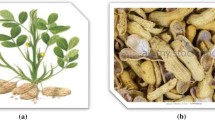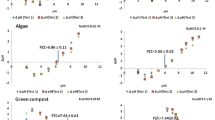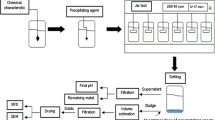Abstract
This research is part of a continuing effort to leach zinc from zinc cathode melting furnace slags (ZCMFSs) to produce zinc oxide. The slag with an assay of 68.05 pct Zn was used in ammonium chloride leaching for zinc extraction. In this paper, the effects of influential factors on extraction efficiency of Zn from a ZCMFS were investigated. The Taguchi’s method based on orthogonal array (OA) design has been used to arrange the experimental runs in order to maximize zinc extraction from a slag. The softwares named Excel and Design-Expert 7 have been used to design experiments and subsequent analysis. OA L 25 (55) consisting of five parameters, each with five levels, was employed to evaluate the effects of reaction time (t = 10, 30, 50, 70, 90 minutes), reaction temperature [T = 313, 323, 333, 343, 353 (40, 50, 60, 70, 80) K (°C)], pulp density (S/L = 20, 40, 60, 80, 100 g/L), stirring speed (R = 300, 400, 500, 600, 700 rpm), and ammonium chloride concentration (C = 10, 15, 20, 25, 30 pctwt), on zinc extraction percent. Statistical analysis, ANOVA, was also employed to determine the relationship between experimental conditions and yield levels. The results showed that the significant parameters affecting leaching of slag were ammonium chloride concentration and pulp density, and increasing pulp density reduced leaching efficiency of zinc. However, increasing ammonium chloride concentration promoted the extraction of zinc. The optimum conditions for this study were found to be t 4: 70 minutes, T 5: 353 K (80 °C), (S/L)2: 40 g/L, R 3: 500 rpm, and C 4: 25 pctwt. Under these conditions, the dissolution percentage of Zn in ammonium chloride media was 94.61 pct.



Similar content being viewed by others
References
R.E. Kirk, and D.F. Othmer: Encyclopedia of Chemical Technology, Vol. 6, 4th ed., Wiley-VCH, New York, NY, 1997.
M.K. Jha, V. Kumar, and R.J. Singh: Resour. Conserv. Recy., 2001, vol. 33, pp. 1-22.
R. Winand: Hydrometallurgy, 1991, vol. 27, pp. 285-316.
J.L. Limpo, J.M. Figueiredo, S. Amer, and A. Luis: Hydrometallurgy, 1992, vol. 28, pp. 149–61.
S. Amer, J.M. Figueiredo, and A. Luis: Hydrometallurgy, 1995, vol. 37, pp. 323-337.
F. Elgersma, G.J. Witkamp, and G. M. Van Rosmalen: Hydrometallurgy, 1993, vol. 34, pp. 23-47.
S. Sylvain, T.T. Chen, and J.E. Dutrizac: JOM-J MIN MET MAT S, 2001, vol. 51, pp. 32-35.
L.N. Singh, and B.R.L. Row: Hydrometallurgy, 1981, vol. 6, pp. 261-267.
K.D. Sharma, and B.R.L. Row: Hydrometallurgy, 1985, vol.13, pp. 377–83.
M.A. Rabah, and A.S. El-Sayed: Hydrometallurgy, 1995, vol. 37, pp. 23–32.
R.K. Roy: A Primer on the Taguchi Method, Van Nostrand Reinhold, New York, 1990.
J. Moghaddam, R.S. Mamoory, Y. Yamini, and M. Abdollahy: Ind. Eng. Chem. Res., 2005, vol. 44, pp. 8952-8958.
J. Moghaddam, R.S. Mamoory, M. Abdollahy, and Y. Yamini: Sep. Purif. Technol., 2006, vol. 51, pp. 157–64.
J. Moghaddam, S. Kolahgar-Azari, and S. Karimi: Ind. Eng. Chem. Res., 2012, vol. 51, pp. 3224-3228.
B. Behnajady, J. Moghaddam, M.A. Behnajady, and F. Rashchi: Ind. Eng. Chem. Res. 2012, vol. 51, pp. 3887-3894.
M. Çopur, C. Özmetin, E. Özmetin, and M.M. Kocakerim: Chem. Eng. Process, 2004, vol. 43, pp. 1007-1014.
S. Ju, M. Tang, S. Yang, and Y. Li: Hydrometallurgy, 2005, vol. 80, pp. 67-74.
J.L. Limpo, and A. Luis: Hydrometallurgy, 1993, vol. 32, pp. 247–60.
S.A. Mitra, G.M. Acosta, J. Khan, and R.L. Smith Jr: J. Environ. Sci. Heal. A, 1997, vol. 32, pp. 497-515.
J.L. Limpo, A. Luis, and M.C. Cristina: Hydrometallurgy, 1995, vol. 38, pp. 235–43.
Acknowledgments
We acknowledge the support of Zanjan Zinc Khales sazan Industries Company for making available the samples used in this investigation and the analytical data included in Table III.
Author information
Authors and Affiliations
Corresponding author
Additional information
Manuscript submitted January 20, 2013.
Rights and permissions
About this article
Cite this article
Behnajady, B., Babaeidehkordi, A. & Moghaddam, J. Determination of the Optimum Conditions for Leaching of Zinc Cathode Melting Furnace Slag in Ammonium Chloride Media. Metall Mater Trans B 45, 562–567 (2014). https://doi.org/10.1007/s11663-013-9971-0
Published:
Issue Date:
DOI: https://doi.org/10.1007/s11663-013-9971-0




